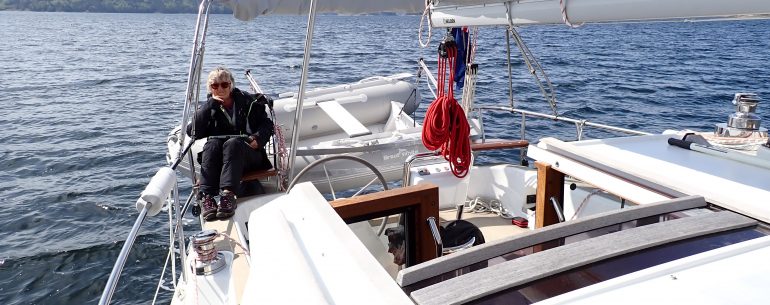Buying a new boat can be a rash thing to do, particularly when you haven’t sold the previous one. Even more so when the previous one is also in Sweden. Charmary is still in Sweden. She wintered at Vindö Marin on the north side of Orust and she is due to be returned to the UK by a delivery skipper early in May. So, today we checked in with the boatyard. Ric and I drove the boat and Anne drove the car – meeting again at the boatyard. We were pleasantly surprised to see that Charmary was already back in the water, though without a mast. This is due to be put back up tomorrow and she should be ready to sail away by May 6th.
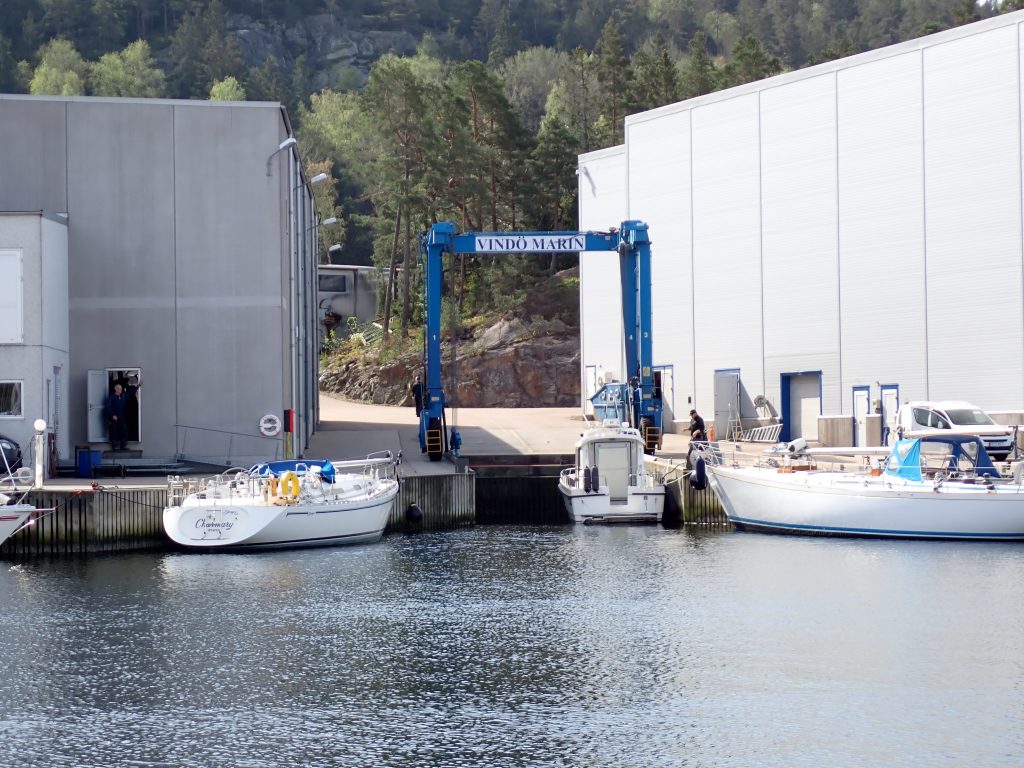
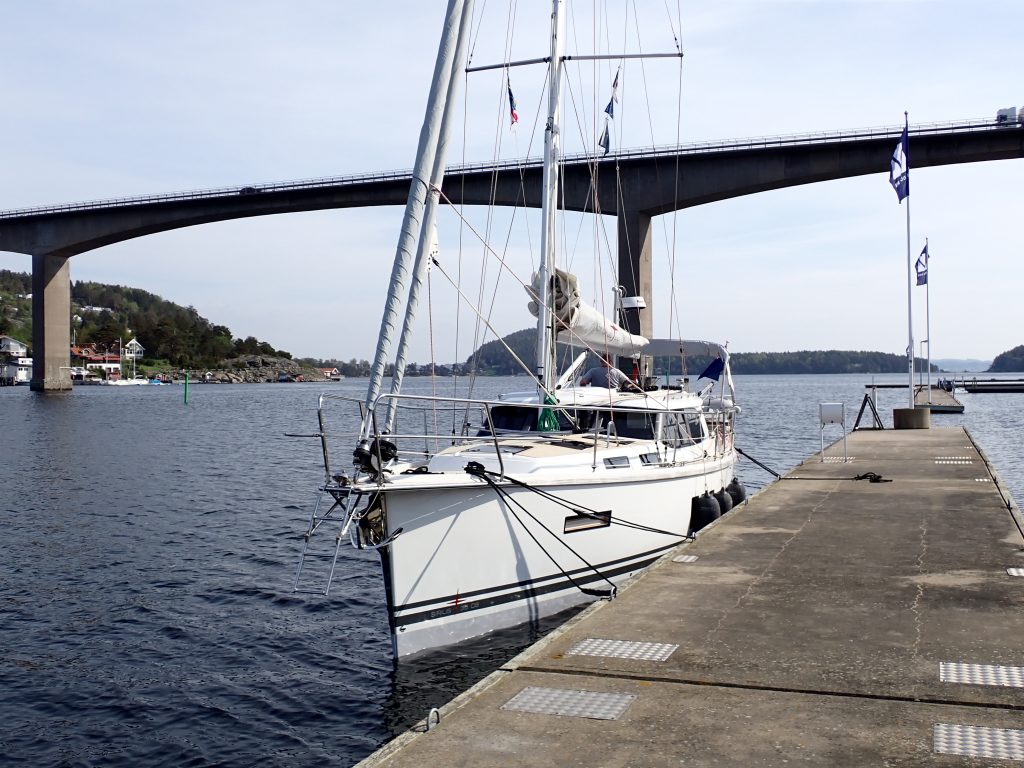
We checked a few final details with the yard, arranged to leave the car there for a while and then headed off. We had a lovely sail under genoa only, headed under the bridge towards Uddevalla, planning to have a look round as we need to collect people from there in a week or so, but decided to stop at Gustafsberg instead. This is about a mile and a half to the west of Uddevalla and looked from the pilot book to be an interesting place.
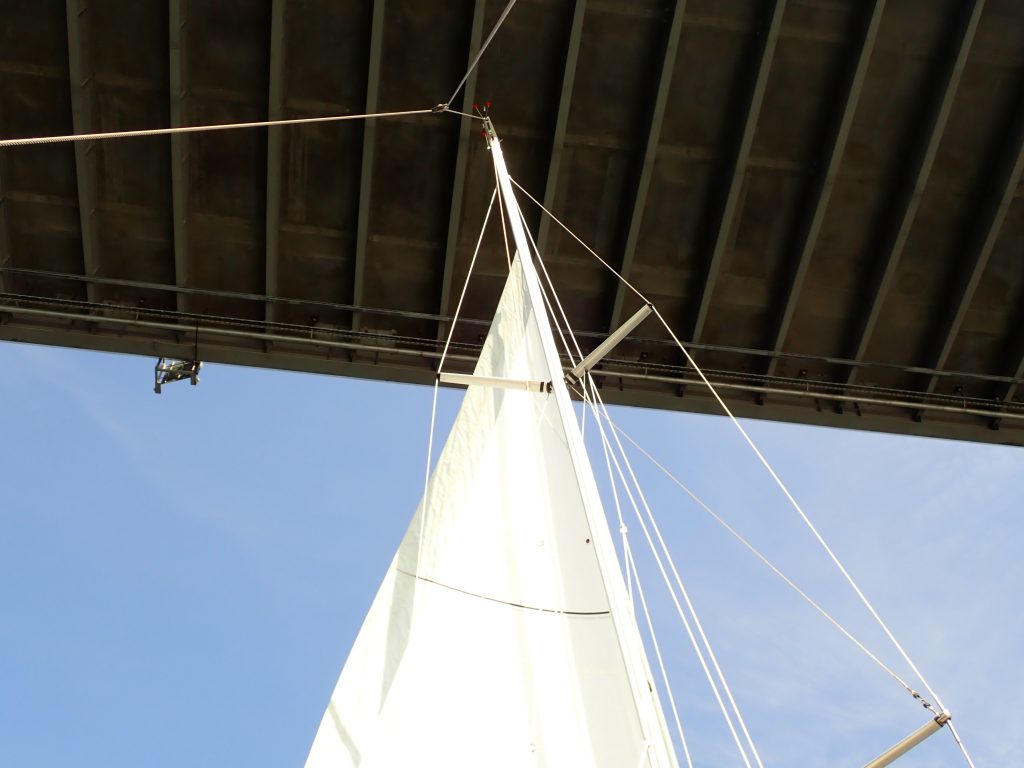
One of the suggested mooring places in Gustafsberg was on a jetty on the western side of the bay, but we approached very slowly. This was partly because it looked shallow, but also because the jetty was actually much higher than the deck and with some doddy woodwork. However, once alongside, it seemed fine, so we decided to stay. The winds tomorrow are forecast to be quite strong, but from a little south of west, so the jetty should be quite sheltered (hopefully!).
We then headed out for a walk. There is a lovely trail around through the hills and woods alongside the town and the ground was a carpet of white with wood anemones and other plants all bursting into flower.

Gustafsberg itself is a fascinating place – almost more museum than town. It was originally known as Baggetofta and was founded by Anders Knappe Hanson as a boarding school for children in need from the Bohuslän region. The original school house is still there with a bust of Hanson outside, gazing wistfully out to sea. The approval of the foundation by King Gustav III in 1774 led to the town being called Gustafsberg in recognition of the Royal seal of approval.
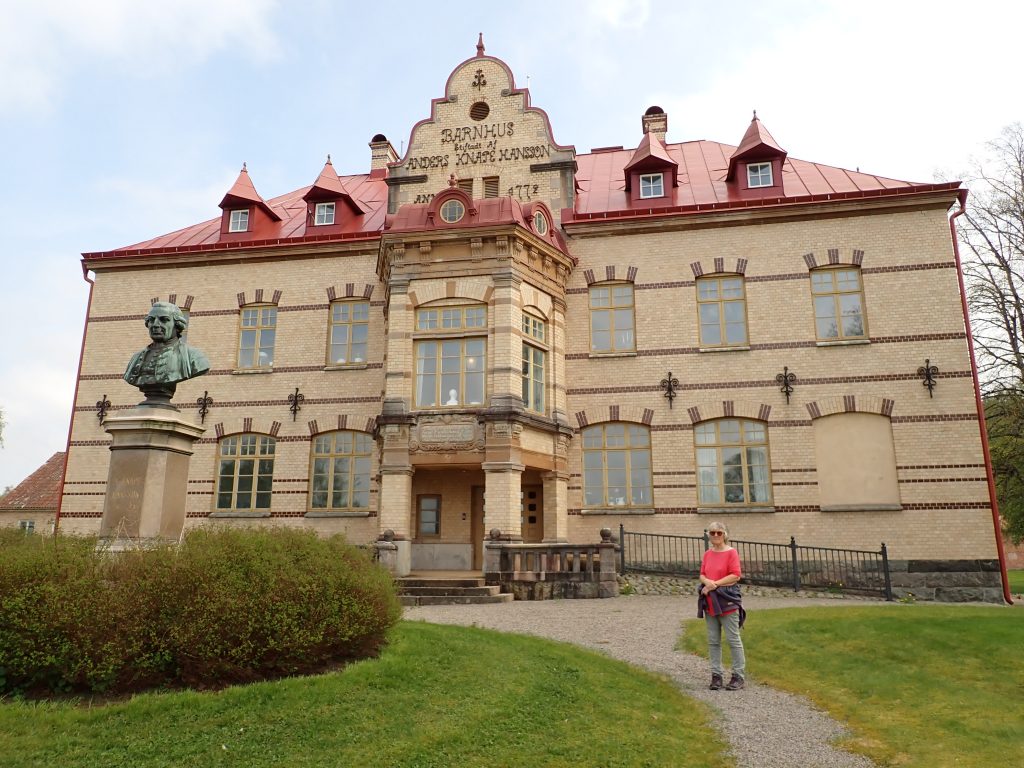
The town really took off though at the start of the 19th century when King Gustav IV and his wife Queen Frederika brought their son – imaginatively named Crown Prince Gustav – to take the waters in an attempt to improve his health. It worked, or at least appeared to, and this put Gustafsberg on the map. The rich, famous and wealthy starting arriving in droves to be cured of their ills and the school foundation took advantage and built two bath houses. One still survives and is now a museum and youth hostel directly on the water front.
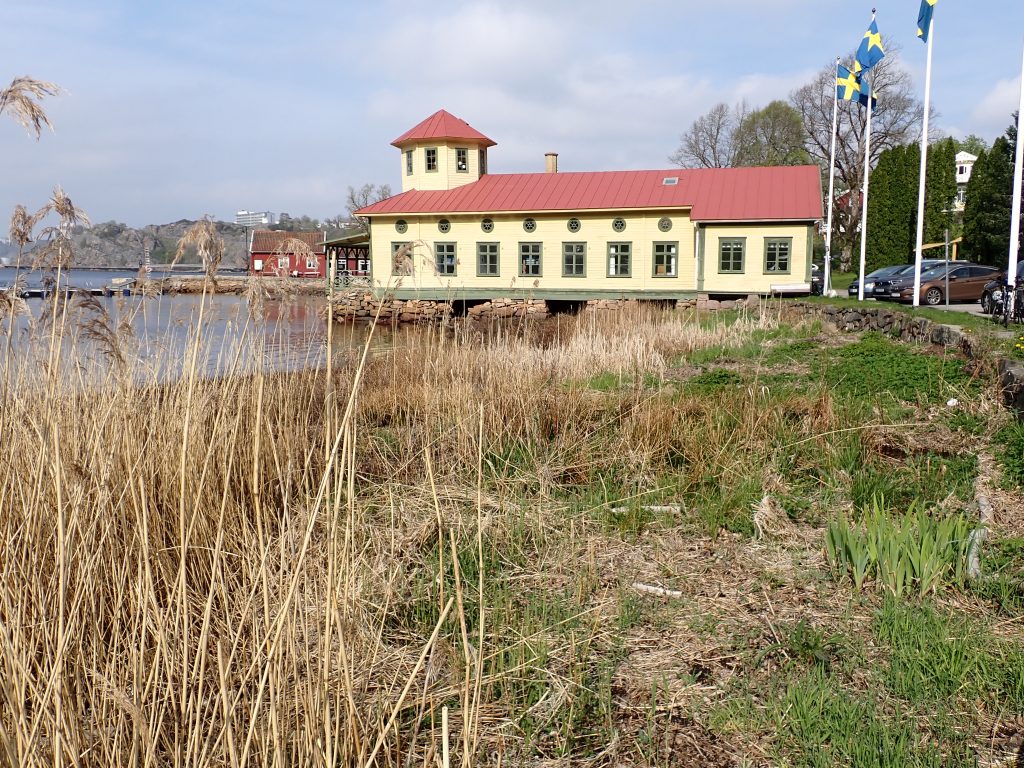
The opening of the two bath houses in 1814 led to further Royal visits and two floating pools were built in the bay – one for ladies and one for gents. Visitors were brought out to the pools in rowing boats to take the waters.
